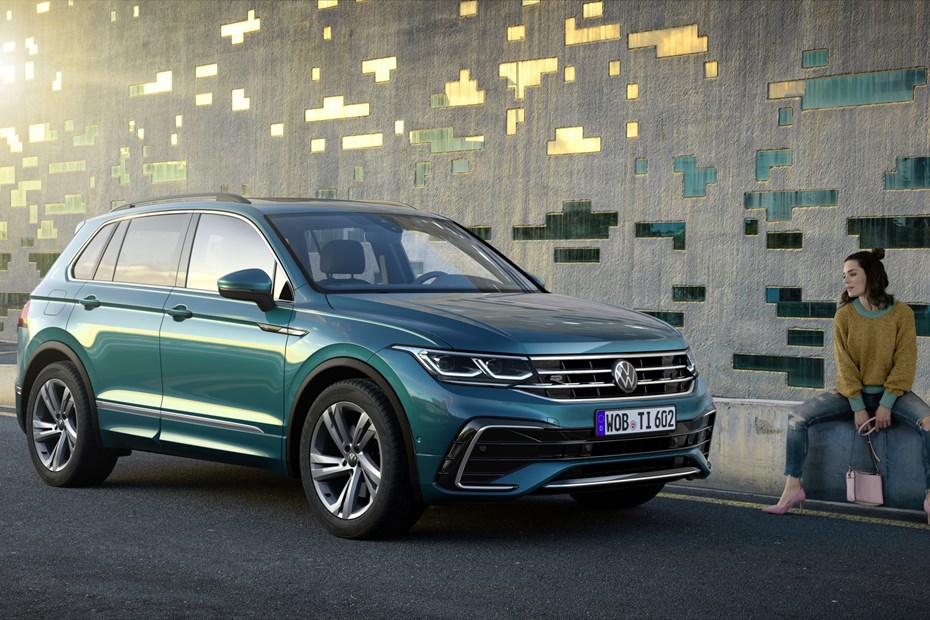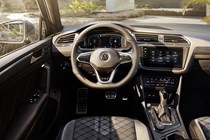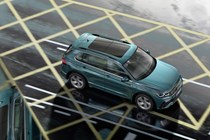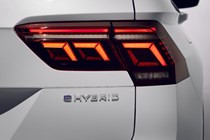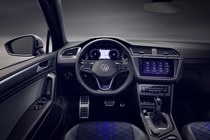Following on from the global release of its new Golf, Volkswagen has given its big-selling Tiguan SUV a major facelift. Mirroring its smaller sibling, the Tiguan gets a sleeker, cleaner look both inside and out, with a fresh grille and headlights plus new interior with fewer buttons than before.
As Europe’s best-selling SUV and the most popular Volkswagen worldwide, there’s plenty riding on this Tiguan, so Volkswagen’s gone all-out, including its very latest engines and technology in a bid to keep this mid-range SUV at the front of the pack. And with talented opposition such as the Skoda Karoq, Peugeot 3008 and Mazda CX-5 to deal with, as well as premium rivals such as the Audi Q5 or BMW X3 within reach of finance deals, there’s a lot of work to be done.
Significant Golf-inspired redesign
The Tiguan isn’t an all-new model like the Golf was, but applying that car’s clean-sheet styling to a larger SUV has been particularly successful. By blending the Golf’s features, such as chunky air intakes on the lower bumper and slim LED headlights, with features from the larger Touareg such as the large, upright grille, the new Tiguan looks positively stylish for a family SUV.
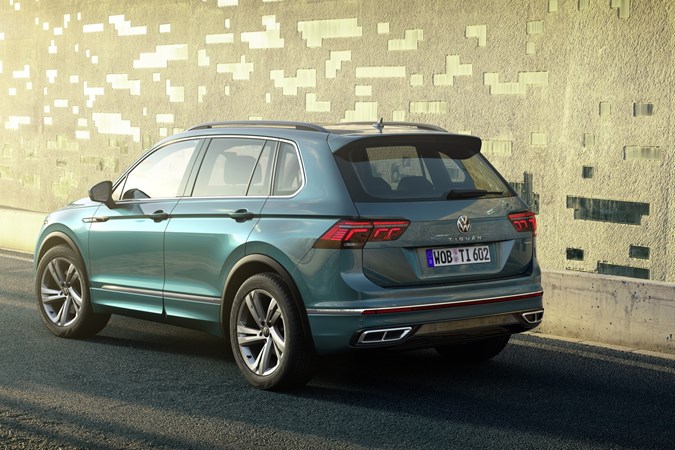
The redesign continues around the back, where new exhaust tip surrounds and a redesigned bumper join the new ‘Tiguan’ lettering on the boot lid. There’s also a chrome strip that runs from the rear bumper right up to the front doors of the car.
Inside, the game is all about minimising buttons, though working within the confines of the Tiguan’s cabin means this isn’t a totally digital environment like the Golf. However, VW’s replaced the climate control panel with a new touch-sensitive variety, and available optionally is a new touch-sensitive steering wheel.

Digital dials and a large, central infotainment touchscreen are familiar Volkswagen features.
Cleaner diesels and new plug-in hybrid
The Tiguan will doubtless be available with a full range of petrol and diesel engines from the relaxed to the rapid, but Volkswagen’s making particular noise about its new plug-in hybrid model. Utilising the same combination of 1.4-litre petrol engine and electric motors as all of the brand’s GTE models, the Tiguan will be badged as eHybrid and will produce a total output of 245hp, with an all-electric range on a full charge of 31 miles.
For those who prefer diesel, the Tiguan will also come with the latest Volkswagen TDI engines. These feature twin-dosing – essentially two separate AdBlue injection systems – to reduce nitrogen oxide emissions. Volkswagen claims these are ‘among the cleanest combustion engines in the world’.
New hot R version
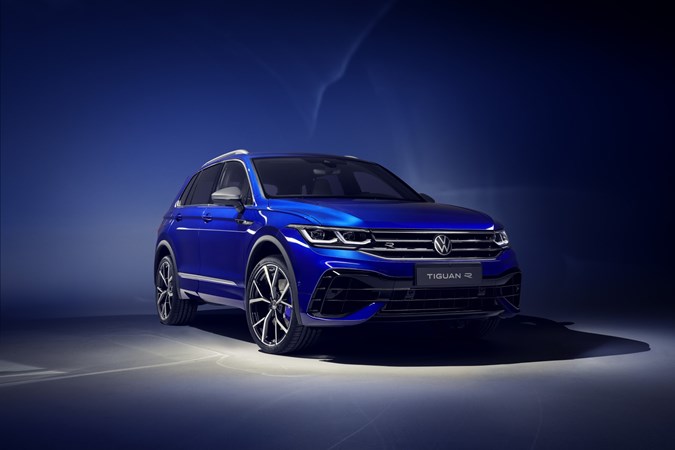
At the other end of the scale, Volkswagen’s giving its R treatment to the Tiguan for the first time. This involves fitting it with the same 320hp 2.0-litre petrol engine as the recently-revealed Arteon R, and it’s paired up to four-wheel drive with torque vectoring capability to optimise grip and stability mid-bend. It gets a sportier appearance package, dynamic suspension and larger brakes in keeping with the increased power.
Connected services and upgraded tech
The new infotainment systems come with Volkswagen’s latest connected tech baked right in, including the latest voice assistant as well as access to music streaming services on the go. Wireless Apple CarPlay and Android Auto are also provided.
Predictive cruise control can adjust the prevailing speed dependant on road signs, junctions and roundabouts, while the Travel Assist system makes an appearance here, too – pairing up adaptive cruise control with lane-keeping aids to drive the Tiguan semi-autonomously at speeds of up to 130mph.
What this means for you
It’s an immensely popular car that’s just been given a makeover, plenty of advanced new tech, and the option of a plug-in hybrid or seriously hot petrol powertrain. What’s not to like?
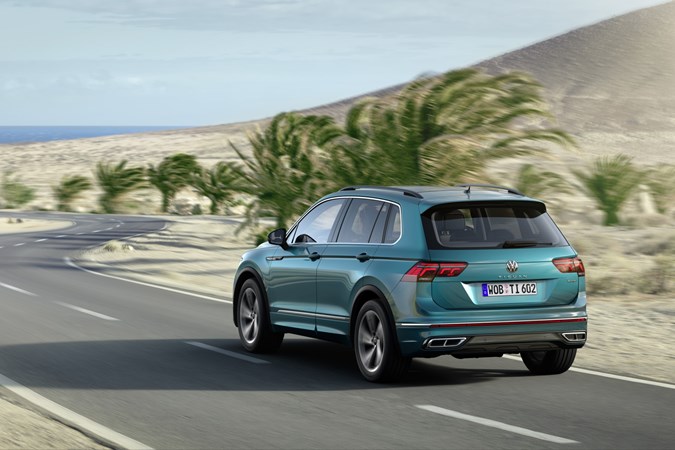
Well, we can’t yet comment on value – Volkswagen hasn’t revealed UK pricing or trim levels just yet, though we can expect to see the base model dropped in favour of Life, Style and R-Line trims just like the Golf.
There’s no question that this will be a desirable SUV when it hits the market, though we wonder how well the new Golf’s touch-based interfaces will translate to an interior architecture that wasn’t really designed for them. Of course, we’ll be among the first to drive the new Tiguan when it’s available and will update our review as soon as we’re able.
Further reading:
Just so you know, we may receive a commission or other compensation from the links on this website - read why you should trust us.


